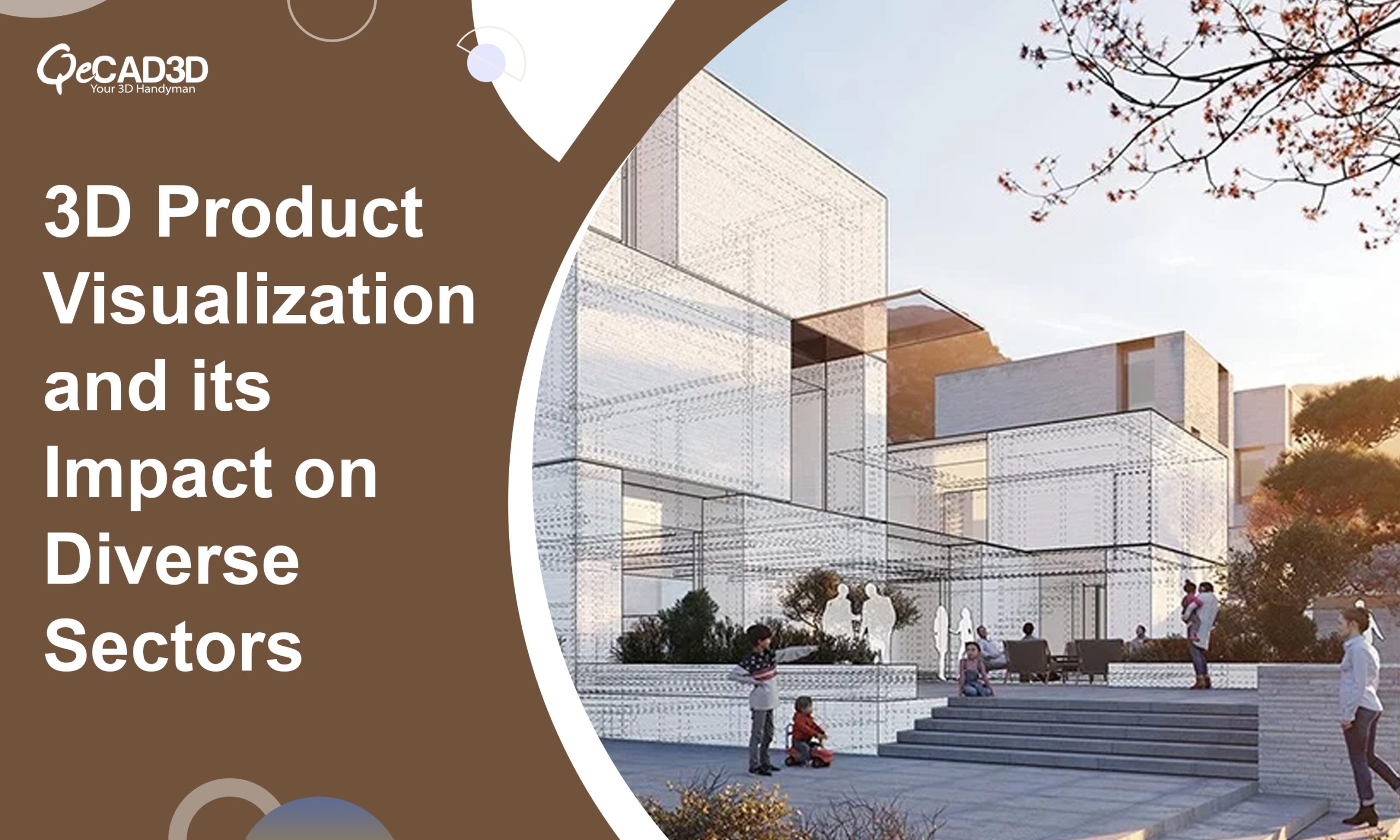3D Product Visualization and its Impact on Diverse Sectors
In today’s fast-paced world, where technology continues to reshape industries, businesses constantly seek innovative ways to engage with their customers and streamline their operations. One such innovation that has gained significant prominence is 3D product visualization. This cutting-edge technology has revolutionized how products are showcased, designed, and marketed across various sectors. In this blog post, we will dive deep into the concept of 3D product visualization, explore its diverse applications, and discuss its myriad benefits to businesses.
Understanding 3D Product Visualization
At its core, 3D product visualization is a technique that utilizes computer-generated imagery (CGI) to create highly realistic three-dimensional representations of products or objects. These 3D models can be manipulated and viewed from multiple angles, allowing users to interact with the product virtually, just as they would in the physical world. The technology leverages advanced software and rendering techniques to generate lifelike visuals, making it a powerful tool for marketing, design, and beyond.
Applications of 3D Product Visualization
- E-Commerce and Retail:
One of the most prominent sectors where 3D product visualization has significantly impacted is e-commerce and retail. Online shoppers often face challenges in assessing a product’s true look and feel before making a purchase. With 3D Product Rendering Services, businesses can create immersive shopping experiences by providing customers with interactive 3D models of their products. Shoppers can rotate, zoom in, and visualize products in different colors and configurations, making a more informed and confident buying decision.
- Real Estate and Interior Design:
Considering the real estate and interior design industries, 3D product visualization is invaluable. Architects, designers, and real estate professionals can use this technology to create stunning 3D renderings of properties and interior designs. Potential buyers and clients can take virtual tours, visualize different layouts, and get a realistic sense of the space, ultimately expediting decision-making.
- Automotive:
The automotive industry has long embraced 3D product visualization for design, prototyping, and marketing purposes. Car manufacturers use Product Animation Services to design and fine-tune vehicle models, test aerodynamics, and showcase vehicles to potential buyers. Interactive 3D configurators allow customers to customize their cars, exploring various color, trim, and accessories options.
- Healthcare:
In healthcare, 3D product visualization is used for medical imaging, surgical planning, and patient education. Surgeons can simulate procedures and explore intricate anatomical details before surgeries, improving patient outcomes. Patients, on the other hand, can better understand their conditions and treatment options through 3D visualizations.
- Manufacturing and Industrial Design:
Manufacturers and industrial designers benefit significantly from 3D product visualization during the product development phase. It enables them to create virtual prototypes, test product functionality, and make necessary design modifications before building physical prototypes. This not only saves time and resources but also enhances product quality.
- Gaming and Entertainment:
In the world of gaming and entertainment, 3D product visualization is a fundamental component. Video game developers use it to create lifelike characters, environments, and objects, immersing players in captivating virtual worlds. Film and television production companies also utilize 3D visualization for special effects, set design, and animation.
Benefits of 3D Product Visualization
- Enhanced Customer Engagement:
One of the primary advantages of 3D product visualization is its ability to captivate customers. Interactive 3D models allow consumers to explore products in detail, fostering a deeper connection with the brand. This engagement often translates into higher conversion rates and increased sales.
- Reduced Costs:
3D product visualization can significantly reduce costs associated with physical prototyping and photography. Businesses can create and update virtual product models inexpensively, avoiding the need for costly photoshoots or the production of multiple physical prototypes.
- Faster Time-to-Market:
The ability to rapidly design, prototype, and visualize products accelerates product development. This speed-to-market advantage can be a game-changer in industries where timing is critical.
- Improved Decision-Making:
3D product visualization empowers businesses to make informed decisions by clearly and accurately representing products. Design iterations, adjustments, and fine-tuning can be done more efficiently, leading to better end products.
- Personalization:
In sectors like e-commerce and automotive, 3D product configurators enable customers to personalize products to their preferences. This level of customization fosters a sense of ownership and increases the likelihood of purchase.
- Realistic Training and Simulation:
In fields such as healthcare and aviation, 3D product visualization facilitates realistic training simulations, reducing the risk associated with learning about actual equipment or patients.
- Sustainability:
Reducing the need for physical prototypes and photoshoots saves costs and reduces the environmental impact by minimizing waste and energy consumption.
Conclusion:
3D product visualization is a transformative technology with applications across diverse sectors. Its ability to create immersive experiences, reduce costs, accelerate development cycles, and enhance decision-making makes it an irreplaceable tool for businesses looking to stay competitive in today’s digital age. As technology progresses, we can anticipate seeing even more innovative uses of 3D product visualization across various industries, further enhancing customer experiences and driving business success.


